Clematis "Arabella": description, cultivation and reproduction

If you have just started breeding plants, and you already want something beautiful and blooming, take a look at Arabella Clematis. At first glance, it may seem that this vine is quite capricious, but if you follow the advice of experienced gardeners and follow all the rules of agricultural technology, this plant has every chance of becoming the most effective element of your landscape design.
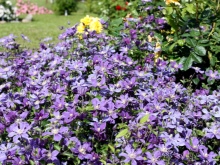
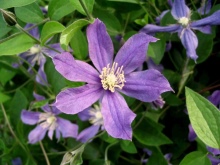
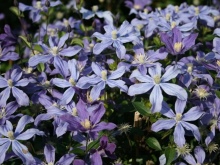
Description of the variety
Clematis "Arabella" was first introduced in the UK and early 90s. last century by the famous English breeder B. Fratwell. It got its name from the variety in honor of the daughter of aristocrats, Hershel.
Keep in mind, science knows another species of clematis Arabella, bred in the XIV century. This plant had snow-white flowers, however, in our time it is considered long lost for floriculture.
Lomonos Arabella, which will be discussed in our article, is interesting in that it does not tend to cling to supports, like the vast majority of vines and loaches known to us.
This clematis is a whole-leaved clematis, and in fact, the leaf plates of the representatives of this variety are not dissected and slightly pubescent. This suggests that woolly clematis material was used in the selection process.
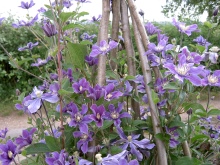
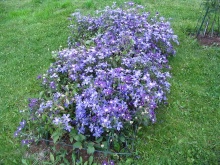
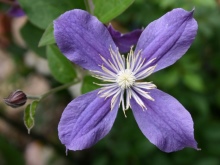
The bushes of this clematis have densely overgrown shoots of the correct hemispherical shape, but they are completely not adapted to cling to supports, therefore, when clematis is cultivated "Arabella" must be tied up by analogy with climbing roses. This unusual feature of clematis allows them to be used as ground covers.
The length of each shoot of a flower varies from 1.5 to 2 m, but if they grow in a horizontal plane, then by fixing the shoots to the soil, you can achieve a length of up to 2.5-3 meters.
"Arabella" flowers only on young shoots. At the very beginning of blooming, they have a deep purple-blue hue, but as they bloom, the color changes and becomes paler, bluish with an unobtrusive purple tint. "Arabella" is a large-flowered plant, the flower size is 8-9 cm, each one has 4-8 elongated oval petals, they look up when opened. Anthers and stamens are beige, but may turn pale yellow.
Its flowering begins early - in areas with a warm climate at the beginning of June. Like most clematis, this variety blooms for quite a long time, usually until September - early October. During the period of prolonged rains, the bush often disintegrates and looks unpresentable for some time, but then it quickly gives off young shoots and its flowering continues.
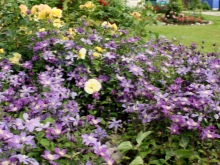
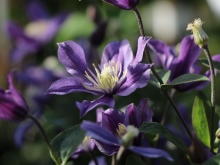
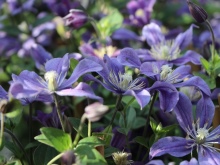
Landing rules
“Arabella” is referred to as clematis for beginners, as it “forgives” its owners for minor oversights, to which more expensive varieties will react with a sharp deterioration in their decorative effect. Correctly planted this plant will be a key factor in the abundant flowering and longevity of the bush.
Like all other representatives of this culture, "Arabella" prefers sunny places, although in light partial shade the plant can develop successfully. Due to the peculiarities of growth, this flower can be planted next to a vertical support or as an ampelous plant in a flower pot, but in any case, he will need good drainage, which will prevent stagnant water. It's no secret that excess moisture often causes problems with clematis and even leads to their rapid death.
If you purchased a seedling along with an earthen clod, you can plant it at any time during the warm season. If you are dealing with rooted cuttings, then you will first have to grow them in a separate vessel so that later you can cut the walls without damaging the roots.
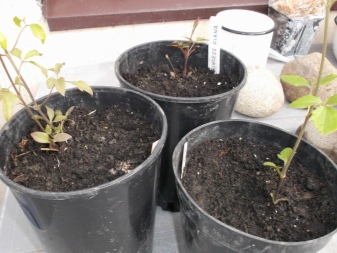
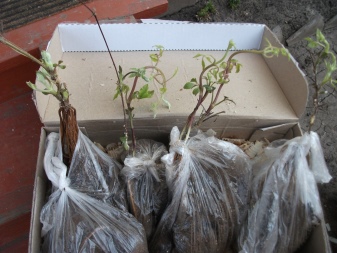
Plants with an open root system should be planted late spring or early autumn. In the first 3-4 weeks after planting, the plant will need light darkening and maintenance of the soil in a moist state until final rooting.
You should not buy seedlings with whitish elongated shoots - they will get sick and most likely will not take root.
Seedlings with a closed root system and juicy green sprouts can only be selected if if you can plant them within 7-10 days.
Otherwise, you will have to find a temporary vessel for them. If you buy clematis with open roots, pay attention to the fact that not only young shoots 40-50 cm long should be located on it, but also a couple of dormant buds.

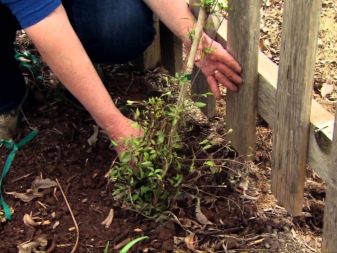
Arabella can grow on all types of soil. There should be no stagnation of moisture in it, but there must be the necessary nutrients. At the bottom of the prepared planting pit, it is necessary to lay out expanded clay, crushed stone or pebbles with a layer of 15-25 cm, and then cover it with earth with the addition of wood ash, as well as humus and superphosphate.
If you are growing clematis in a planter, a drainage layer will also be required. but it can be less - 7-12 cm. As a substrate, you can use ordinary garden soil mixed with humus. Keep in mind that even in the most voluminous hanging pots, clematis cannot live longer than 3-4 years, sooner or later you will have to transplant it into the ground or divide it.
When planting a seedling, it is important that the root collar is 5-10 cm deep. In cold regions, the flower will additionally require a thick layer of organic mulch.
If you plan to use a vertical support for your vine, it is advisable to dig it in before planting, otherwise the roots of the Arabella may be damaged.
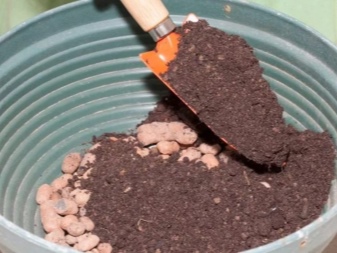
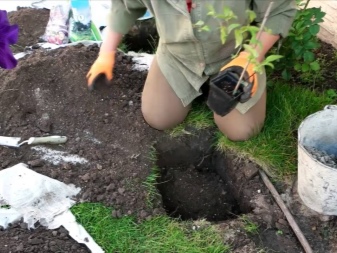
Follow-up care
In order for the plant to grow and develop well, it will need high-quality care. Once every 5-7 days, you need to water the clematis. If the summer is too hot, then the amount of irrigation should be increased.
Starting from the second year, clematis will need additional feeding. Complex formulations are best suited for this. Fertilizers need to be applied every 2 weeks.
The root system of clematis reacts extremely negatively to dryness and heat, therefore, to maintain the optimal moisture level and temperature regime, the plants will need mulching. After watering, it is necessary to cover the layer of soil around the bush with straw, sawdust, chopped bark of coniferous trees or compost.
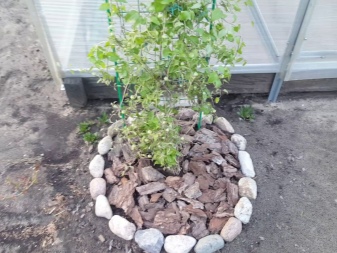
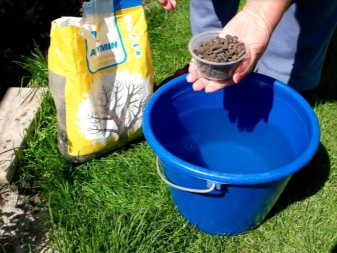
Disease and pest control
Clematis is a fairly viable plant that resists most diseases and pests of flowering crops. But problems can happen with them. In the early stages of the disease, clematis can be saved, so it is extremely important to know what infections this plant may face and how to deal with them.
- High efficiency in the fight with gray mold shows "Fundazol". Most often, clematis is faced with this problem in rainy weather.
- Ascochitosis is manifested by the appearance of brown spots and holes on the leaf plates. In order to prevent the spread of this disease, the bush is treated with copper sulfate.
- On defeat powdery mildew soda ash helps. If resuscitation is not started on time, clematis can die in a matter of days.
- Rust will quickly go away if sprinkled with a 2% solution of Bordeaux liquid.
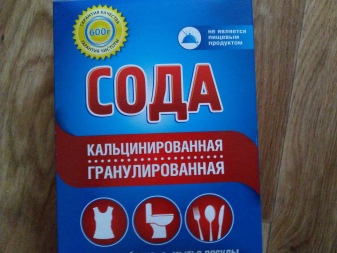
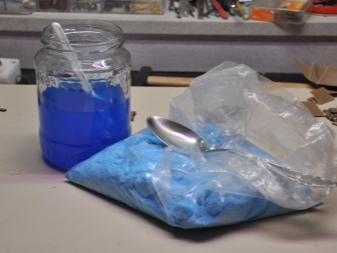
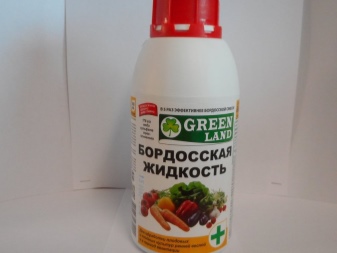

How to prepare for winter?
Clematis of all types tolerate cold and long winters quite well, however, it will be useful to prepare your pet for wintering.
Clematis "Arabella" belongs to the third group of pruning, it means that immediately after flowering, the vine must be cut almost to the root... Pruning is done in the fall, leaving only small stumps 15-20 cm long. They should have at least 3-4 kidneys.
On the eve of winter, you just need to cover the remaining parts of the bush and a near-stem circle with a diameter of about half a meter with compost, humus or another type of mulch.
If severe winters are expected, then you can additionally build a frame of boards and tighten it with a layer of agrofibre or roofing material - in this case, your plant will be protected from critically low temperatures and their drops.
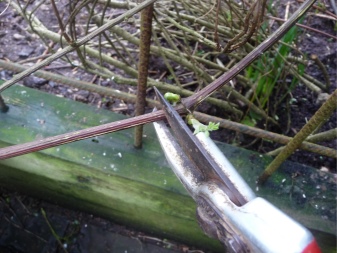
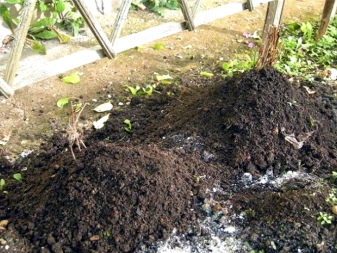
Reproduction
"Arabella" refers to clematis, which reproduce exclusively vegetatively - any attempt to grow clematis from seed yields a result very far from the mother variety.
The easiest and most affordable way is considered graftinghowever, Arabella is usually accelerated for a very long time, so it is best to use layering propagation. The stems often spread along the ground, so it is not difficult to bend them down and pin them to the substrate. After some time, roots appear at the point of contact with the ground - then you can cut off the branch and transplant the seedling to a permanent place.
Another affordable way of breeding clematis is by dividing the bush., but in this case you will not be able to get a lot of planting material at once.
Experienced growers often use grafting, but for beginners this method is too complicated.
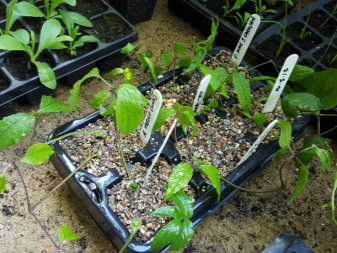
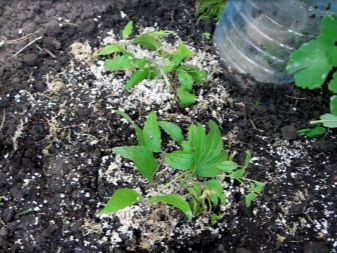
Beautiful examples in landscape design
Long and abundant flowering of clematis allows them to be successfully used in landscape design.
Clematis "Arabella" looks spectacular as a ground cover plant, so it is often planted to decorate rabatki, rockeries and flower beds.
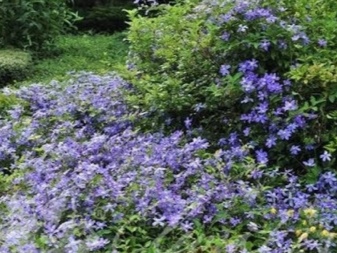
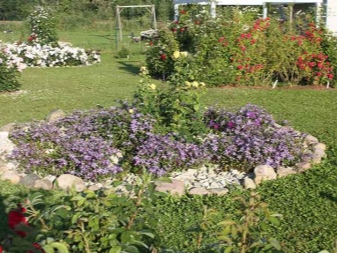
When decorating an infield with Arabella clematis, the entire length of the shoot is usually used, growing a vine on a vertical support. It is only necessary to periodically tie up the plant. Any material can be used as a support. Arches, gazebos and fences framed by this beautiful flower look especially impressive.


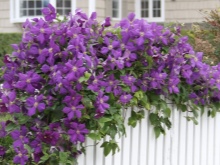
Clematis look harmonious in combination with perennials of a short flowering period, its shoots penetrate into the bush and seem to fill it with their decorative flowers. It is very popular for tamping rose bushes.
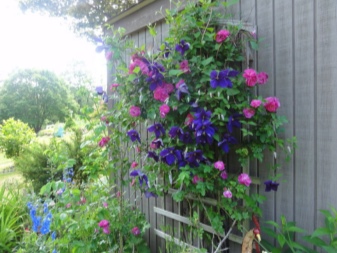
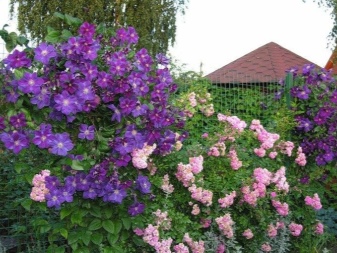
"Arabella" looks invariably luxurious in tandem with conifers.
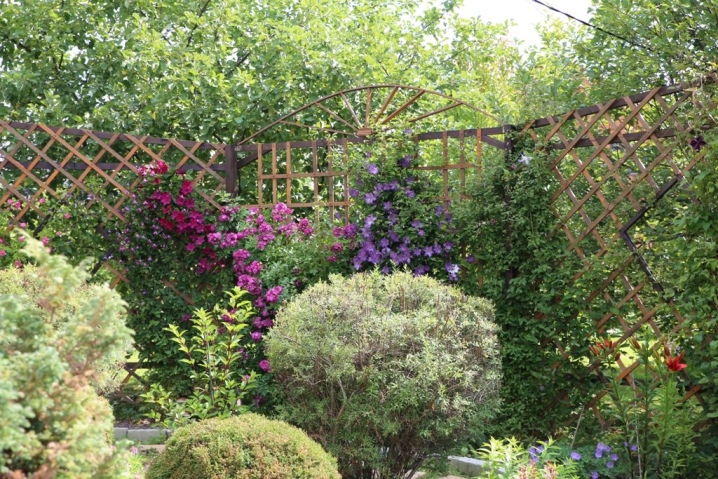
Clematis of this variety is often used to decorate balconies and attics in the form of an ampelous culture.
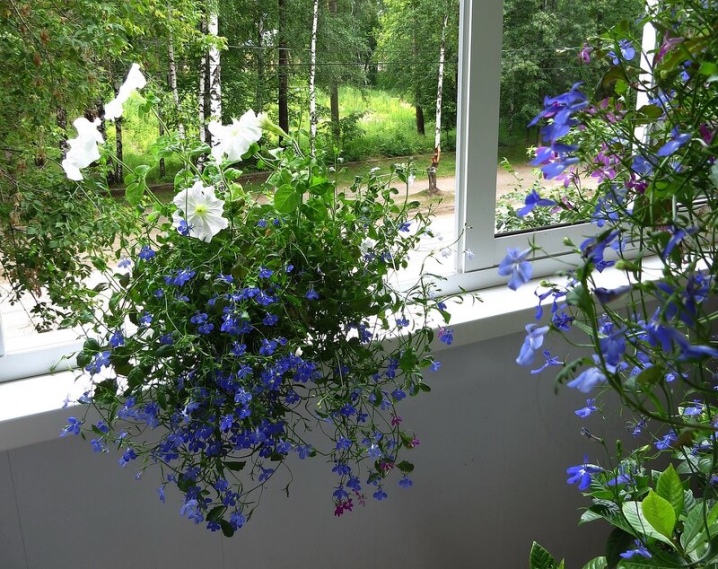
For the peculiarities of planting and rooting clematis lashes, see below.







































































































The comment was sent successfully.